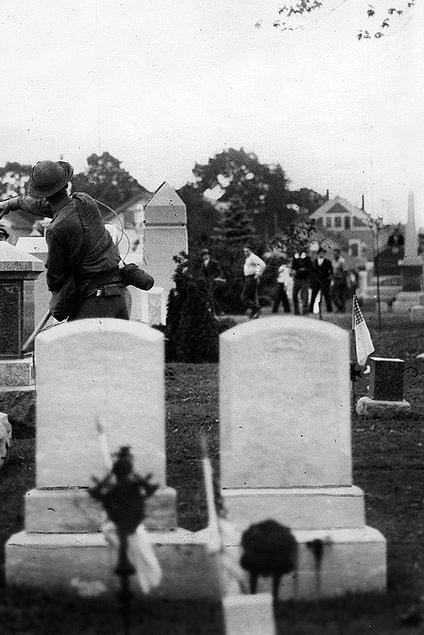 President Grover Cleveland pushed through the legislation to make Labor Day a national holiday in 1894, just days after the violent break up of the Pullman Rail Strike – a walk-out led by Eugene Debs that started with 3,000 workers in Pullman, Illinois and grew to almost 250,000 by the time the president deployed some 12,000 army troops to dismantle the protests.
President Grover Cleveland pushed through the legislation to make Labor Day a national holiday in 1894, just days after the violent break up of the Pullman Rail Strike – a walk-out led by Eugene Debs that started with 3,000 workers in Pullman, Illinois and grew to almost 250,000 by the time the president deployed some 12,000 army troops to dismantle the protests.
The holiday declaration was meant as an appeasement to organized labor; 13 strikers were killed and 57 were wounded during the insurrection.
Some 40 Labor Days later, Rhode Island would leave its mark with regard to famous organized labor insurrections in what has become known as the Saylesville Massacre – although it really wasn’t so much of a massacre as it was a 48-hour stand-off, spanning two cities, between union workers and the Rhode Island National Guard.
Textile workers from all over the Eastern Seaboard had gone on strike for better wages and mill owners responded by hiring non-union laborers to keep their businesses in operation. On Monday, September 10, at the Sayles Finishing Company in Central Falls, 600 union supporters had gathered in front of the textile mill that was now making due with non-union workers.
John A. Salmond describes the events that then transpired in his 2002 research paper “The General Textile Strike of 1934: From Maine to Alabama”:
“Minor scuffles turned more serious as the shifts changed at 3 and 11 p.m. The state police, augmented by special deputies lost control at the second change, and, as the crowd surged forward to invade the plant, they fired blindly into it. Two strikers were hit with buckshot while a score or more were injured by bricks, rocks and billy-clubs as the police added ‘to the uproar the thump of swinging nightsticks and exploding teargas bombs.’ One, Louis Fercki, was critically hurt, his skull fractured by a club during a fracas at the mill gate. The strikers prevailed, however, trapping seven hundred workers inside the mill until first light.”

The next day, September 11, Governor Theodore Francis Green called in the National Guard, but Salmond wrote that “he was too late to prevent an escalation in violence at Saylesville.”
Local and state police were joined by some 260 national guard troops, who could not keep in control the reported 4,000 people who were continually charging the gates of the Sayles Finishing Company throughout the day and into the next evening. They threw rocks and pieces of headstones from a nearby cemetery at the troops, according to Salmond.
“Indeed, the local cemetery had become a battleground. Troops, firing machine guns from the mill roof, eventually drove the crowd away from the gates. Eight strikers were shot, none fatally, due to the determination of the guard commander to use only buckshot and to fire, for the most part, safely over the heads of those in the crowd. More than 100 were injured by clubs or missles, however, including 18 guardsmen, before the fighting ceased. Governor Green, meantime, had placed the whole Saylesville district under martial law.”
Bullet holes in headstones can still be found at the Moshassuck Cemetery in Central Falls, 978 Lonsdale Ave, where today’s crop of local labor leaders will hold a vigil at 11 a.m. to honor the event and the people who took part. You can watch some old news footage of the events by clicking here.
But the real massacre occurred the next day in Woonsocket, at the Rayon Plant. There, guard troops fired on striking workers again. One, 19-year-old Jude Courtemanche, was killed and four others were seriously-wounded.
“This time there was no shooting over the heads. Faced by an angry mob of nearly 10,000, guardsmen shot to wound, if not kill. ‘The screams of the wounded stopped the strikers,’ ran one report. They beat a disorderly retreat to the town’s business district, where for three hours they laid waste, looting stores, setting fires, and hurling stones and other missles before the guard was able to restore order. Governor Green, by now thoroughly shaken, closed all of Woonsocket’s nighclubs, saloons, dance halls and stores until further notice, and an uneasy calm returned to the city.”
